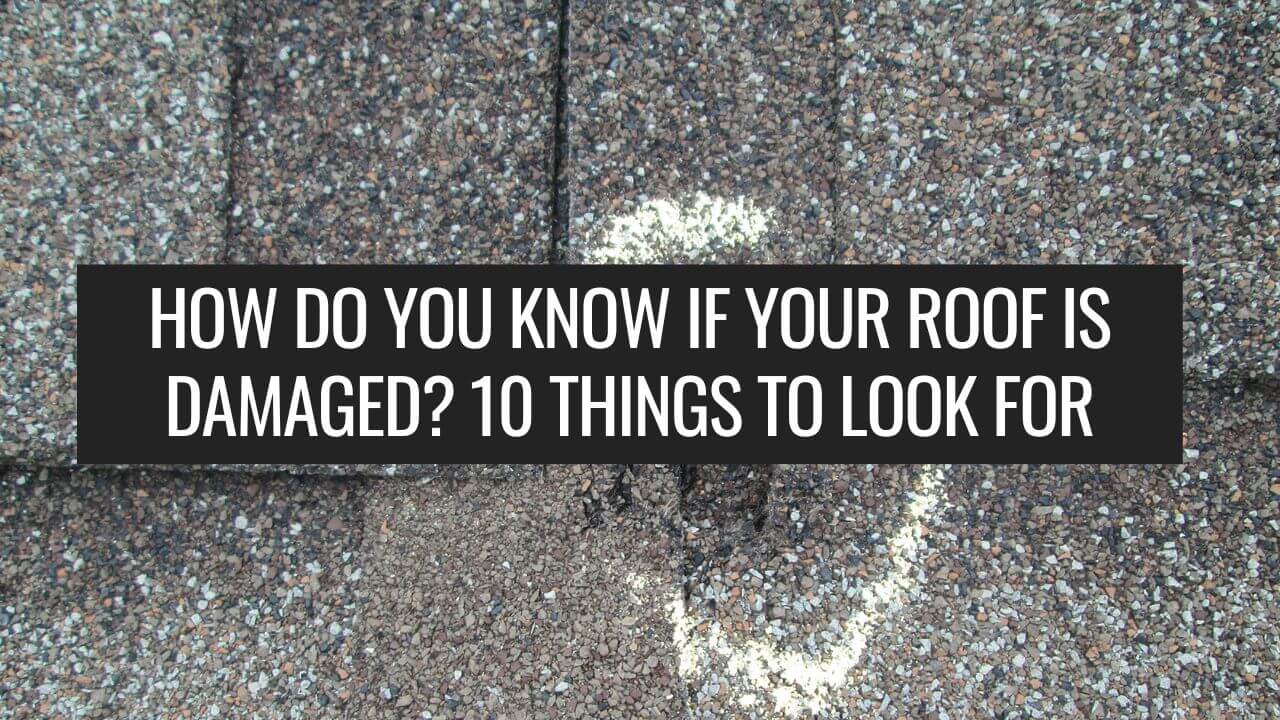Any homeowner knows that roof damage is a serious problem that should be addressed as soon as possible. One way to confirm if your roof has damage is to reach out to a trusted roofing company like Legacy Restoration for an assessment, but there are also everyday signs that show repairs are needed. Knowing what to look for can prevent smaller repairs from turning into major ones over time.
So what are the signs of roof damage? Keep reading and we’ll explain 10 signs that your roof is damaged and what you should do next.
1) Ceiling Stains
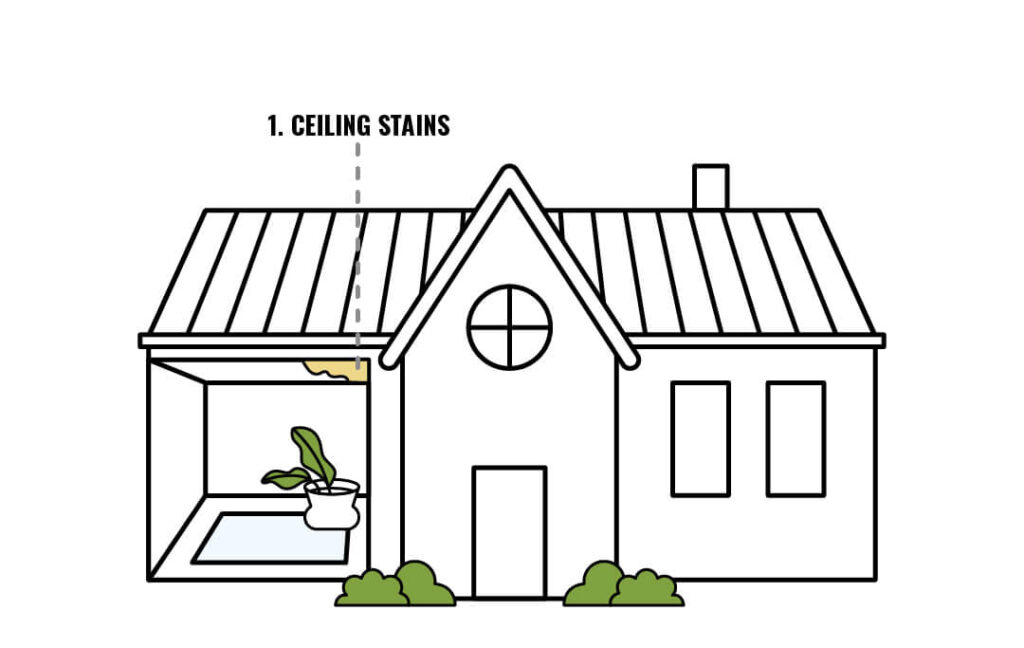
When it comes to roof damage, your ceiling can be one of the first indicators that there is a problem. If you notice stains on your ceiling in one or several places of your home, it’s worth paying attention to. The culprit for stained ceilings or water running down the walls is typically a leak in your roof, so tracking it down is critical in order to prevent further damage to your home.
When you notice signs that suggest your roof may be leaking, hire a roofing professional like Legacy Restoration to repair it immediately. If ceiling stains or water trickling down your walls are left untreated, they can rot your home’s framing and cause mold to grow.
2) Damaged Shingles
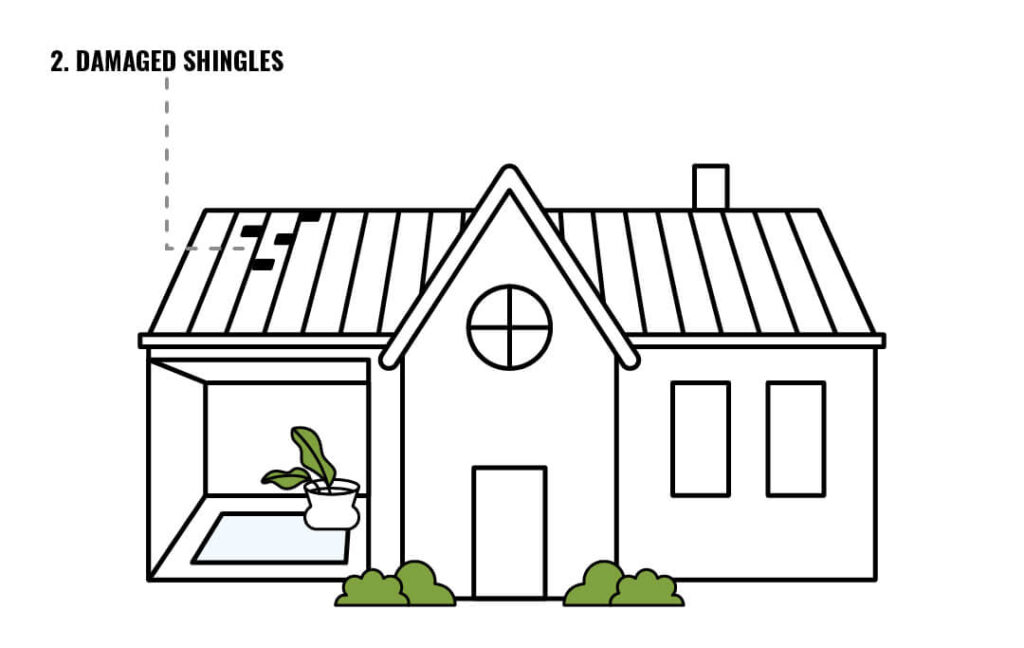
We’ve talked about what to look for inside of your house, but what are some external signs that can signal it’s time for a repair? Next time you’re outside, take a moment to visually assess your home’s roof. What do you see? The shingles on your roof should all lie flat. You should also see if you can notice any cracking or buckling. While you can’t see everything from the ground, noticing things from a distance definitely signals that your roof needs to be replaced sooner rather than later.
3) Clogged Soffits
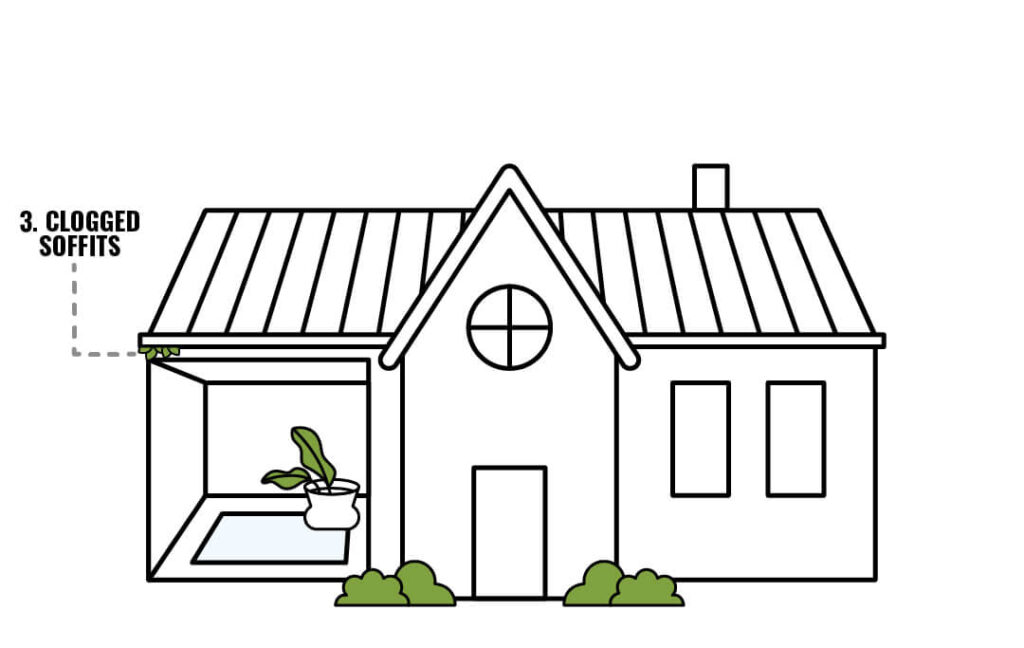
The vents in our attic and your home’s soffit vents work together to keep air moving in and outward. This airflow helps prevent warm air from staying trapped in your attic which can lead to increased home temperatures and higher utility costs. When air soffits become clogged, they can prevent this airflow or significantly reduce it.
For the best airflow, the chutes throughout your home’s rafter space should be clear and made of plastic. This helps combat the buildup of moisture found in the air which better prevents mold growth from overtaking your roof’s internal framing.
4) Moss Spore
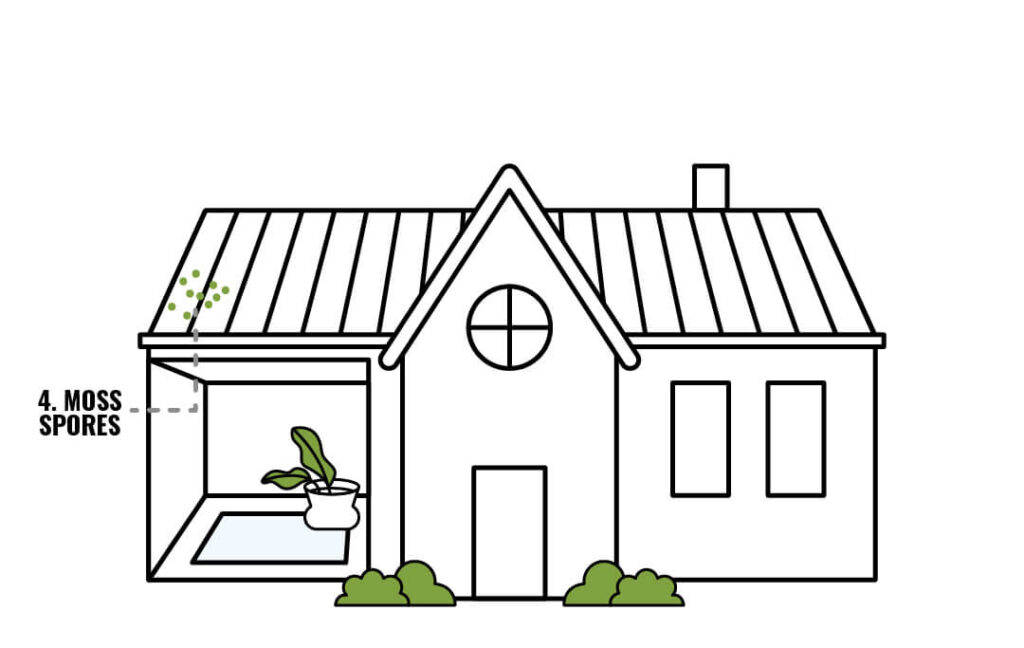
Moss is a recognizable plant that is often seen on tree limbs and branches. While they may not seem like a threat, spores can grow in the small spaces between and under your shingles. As the moss grows (and ultimately creates and releases more spores), it expands and leaves your home vulnerable to expensive issues including leaks, wood rot, and shingle damage.
So you notice bunches of moss on your roof, what now? Depending on how much the visible moss has grown, removal can be fairly simple and easy. Once they’re removed, just scrub the area with water. If your roof has significant moss growth, a chemical treatment may be the only option once the moss has been removed.
5) Rusted Gutters
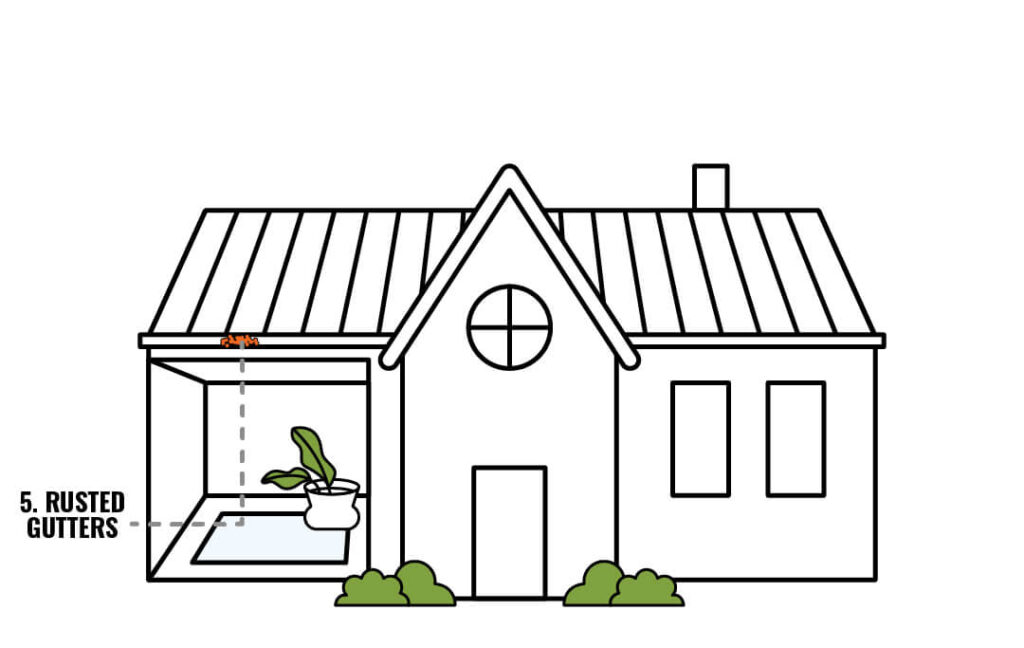
Your gutters perform the important job of redirecting water away from your home. When they leak, it’s normally due to weakened areas caused by rust. As more of the gutters continue to erode, you’ll find more leaks. For gutters without damage, you can help prevent leaks from developing by using gutter and roof repair tape to cover the sources of your leaks. Before using the tape, it’s important to use a wire brush and putty knife to remove the rust and tar buildup.
6) Curled or Corroded Flashing
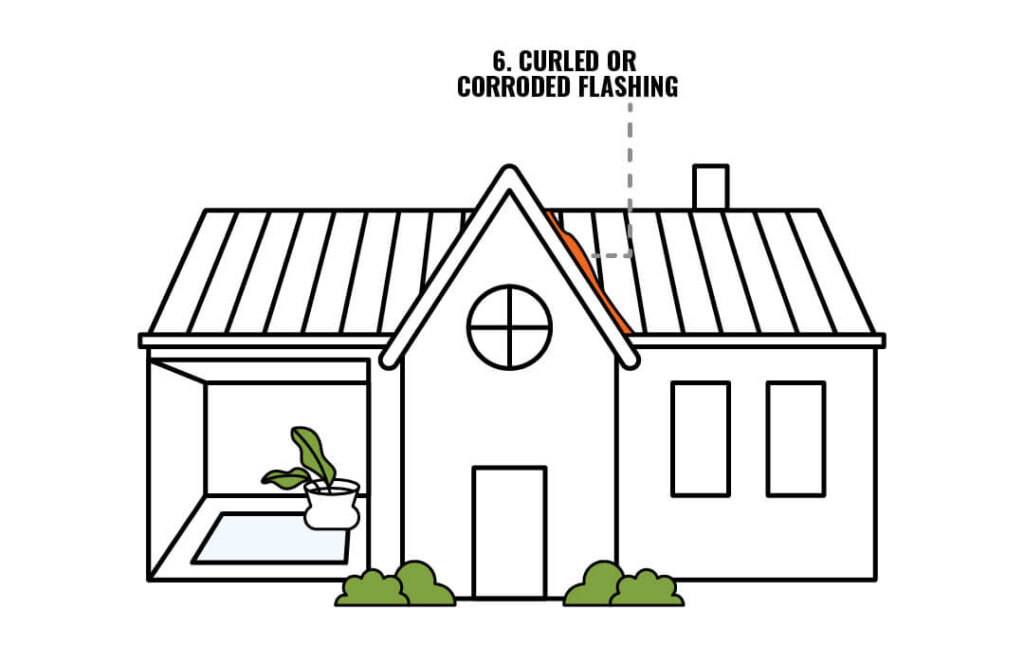
Once you start looking at your home for potential signs of damage, it’s important to also assess the roof flashing which is the area connected to your chimney from your roof. The flashing also helps redirect water, so it doesn’t collect in one area and pool–which can increase chances for water damage. It’s common for homes to have flashing close to skylight windows and against walls or vents.
Because flashing is made of thinly layered metal, it has a tendency to crack, corrode or curl. Once flashing starts to show signs of damage, it needs to be replaced as soon as possible so water continues to be redirected. If your flashing is difficult to reach, or if you would prefer not to get on top of your roof, a roofing professional can assess and make any necessary repairs.
7) Rusted Chimney Flashing
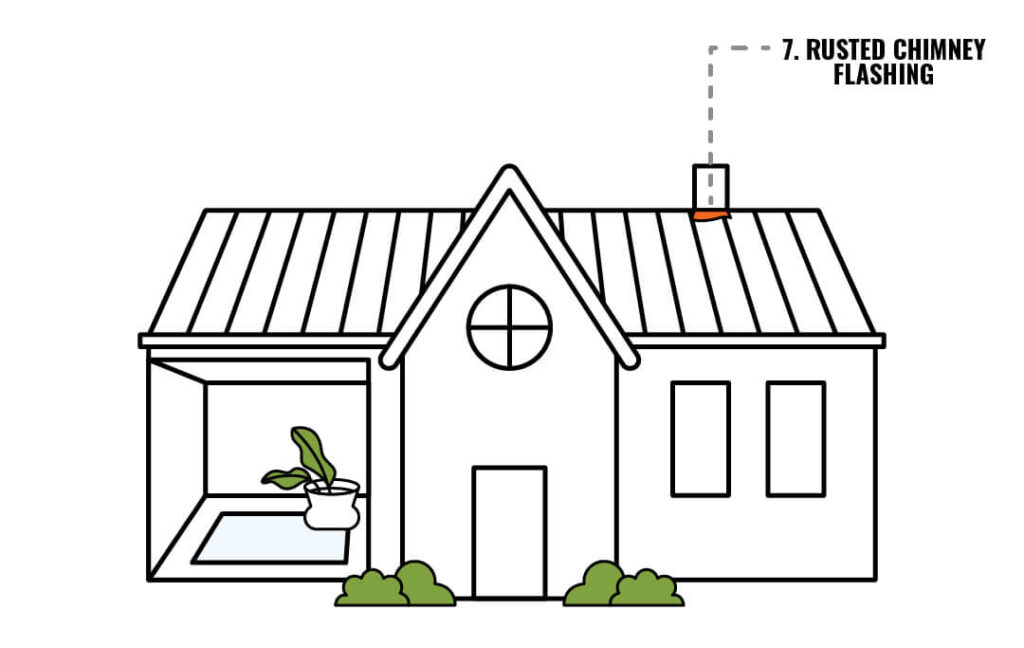
Despite the sturdy appearance of chimneys, the areas around them are also susceptible to flashing damage. Flashing made from certain materials, like galvanized steel, are at risk for rusting. One area to check when looking for possible rust are the angles where your flashing bends. If you discover rust, slipping new flashing under the rusted flashing you’ve identified can serve as a short-term fix until you’re able to have someone come out to repair it.
8) A Sagging Roof
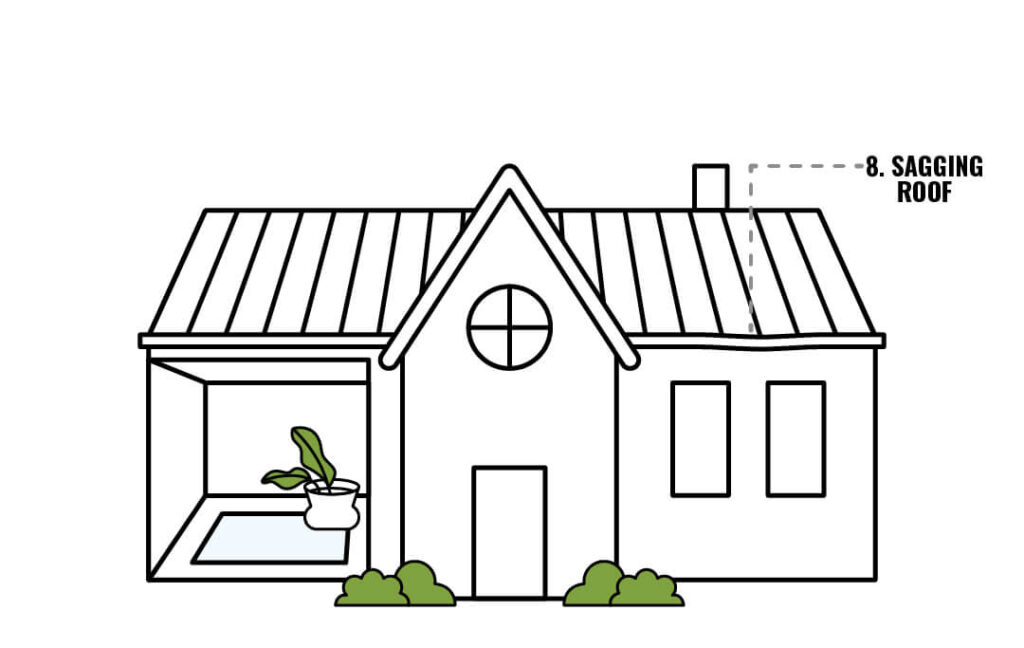
The slope of your roof should always be a straight line. Any drooping or sagging you see (or don’t see) requires immediate attention. Because this is one of the most obvious signs of roof damage, it’s likely you’ll need an entirely new roof. Another thing to check for if you find sagging or drooping is trapped moisture which often signals rotting boards. Even if you don’t notice all of these things in your roof at once, reaching out to a roofing company to begin the replacement process is urgent and shouldn’t be put off.
9) Collection of Granules
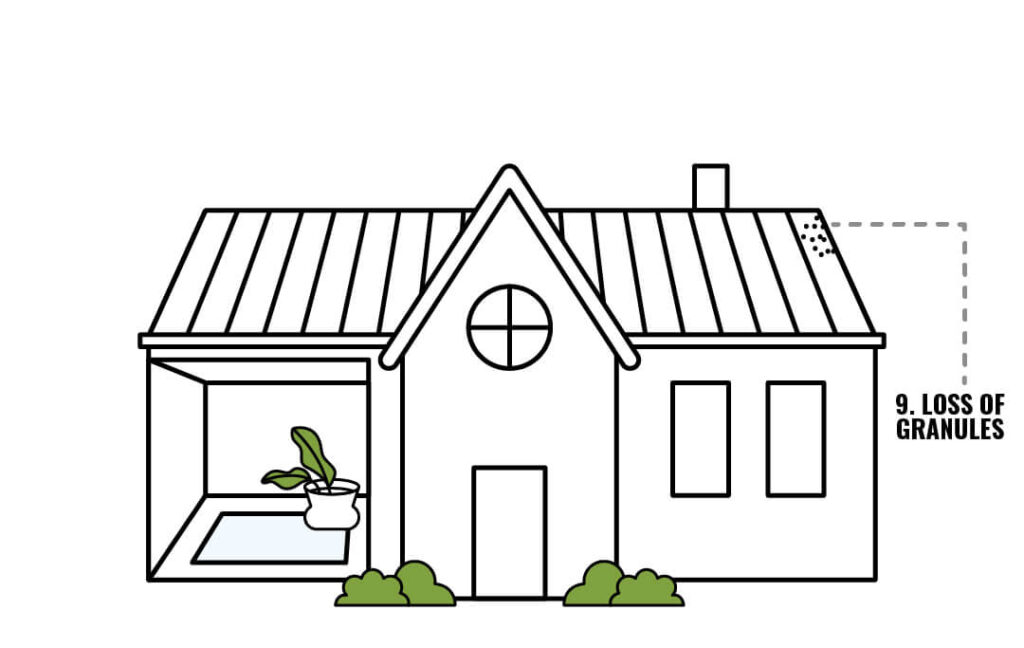
Over time, your roof’s granules will naturally loosen due to age and weather. You can easily check for signs of granule loss by looking for them in your gutter and near your gutter’s spouts. If you notice that the shedding is significant, your shingles are losing their protective layer. This layer is important for shingles to perform properly, so lots of loose granules might mean you need to replace your shingles.
10) Hail Damage
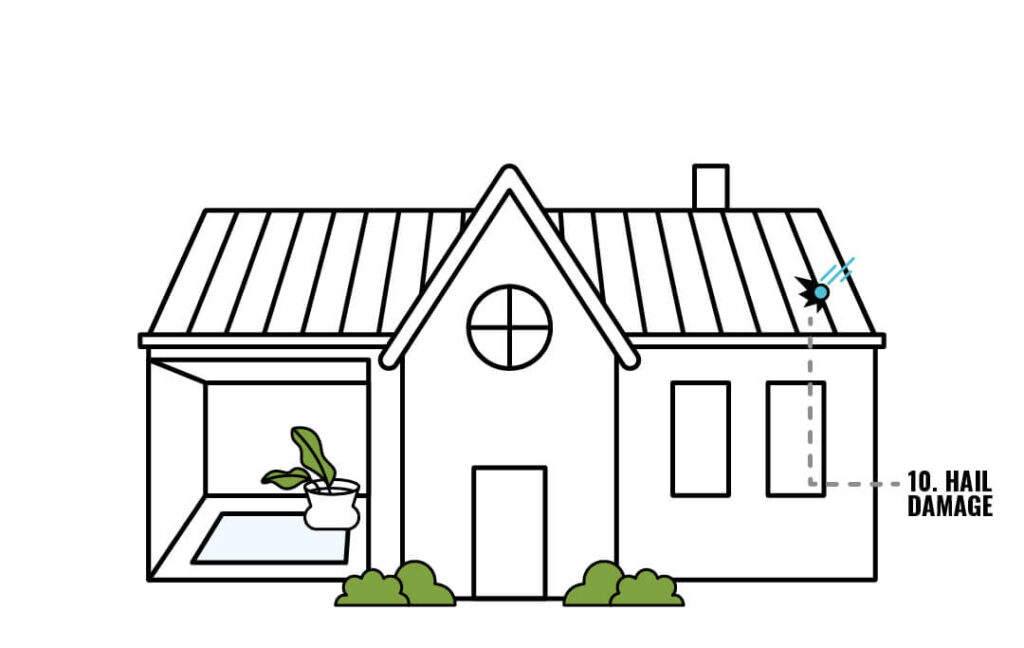
The speed and size at which hail hits any surface can somewhat determine the severity of damage. Even small pieces of hail should be taken seriously because their speed contributes to the force at which they can hit your car, windows, or home. After a hailstorm, check items and the exterior of your home for dents. Even if you don’t see any dents on your home, damage to your home’s surrounding landscape can suggest possible damage you may not see. When in doubt, always call your roofer to do an inspection and suggest next steps.
Your roof is an important part of your home. While a well-maintained roof will protect your home from the elements, a damaged or compromised roof can create opportunities for rain, moisture, and more to get inside. Although you can quickly check for noticeable signs of damage in several ways, it’s always best to have your roofer complete a thorough inspection, especially after a major storm or if you notice anything concerning. If you’re not sure about the state of your roof, fill out the form or call the number below for your free estimate.

